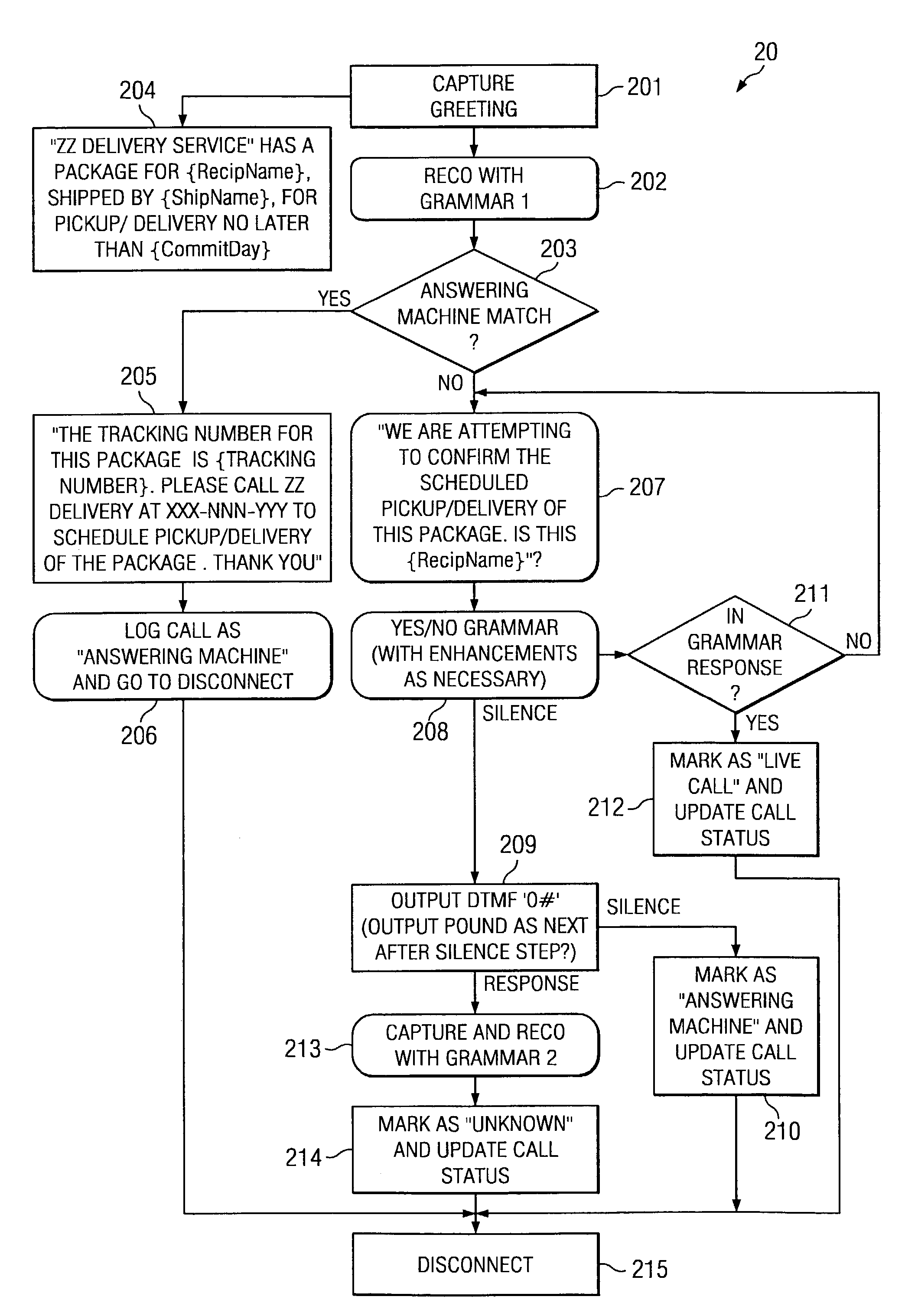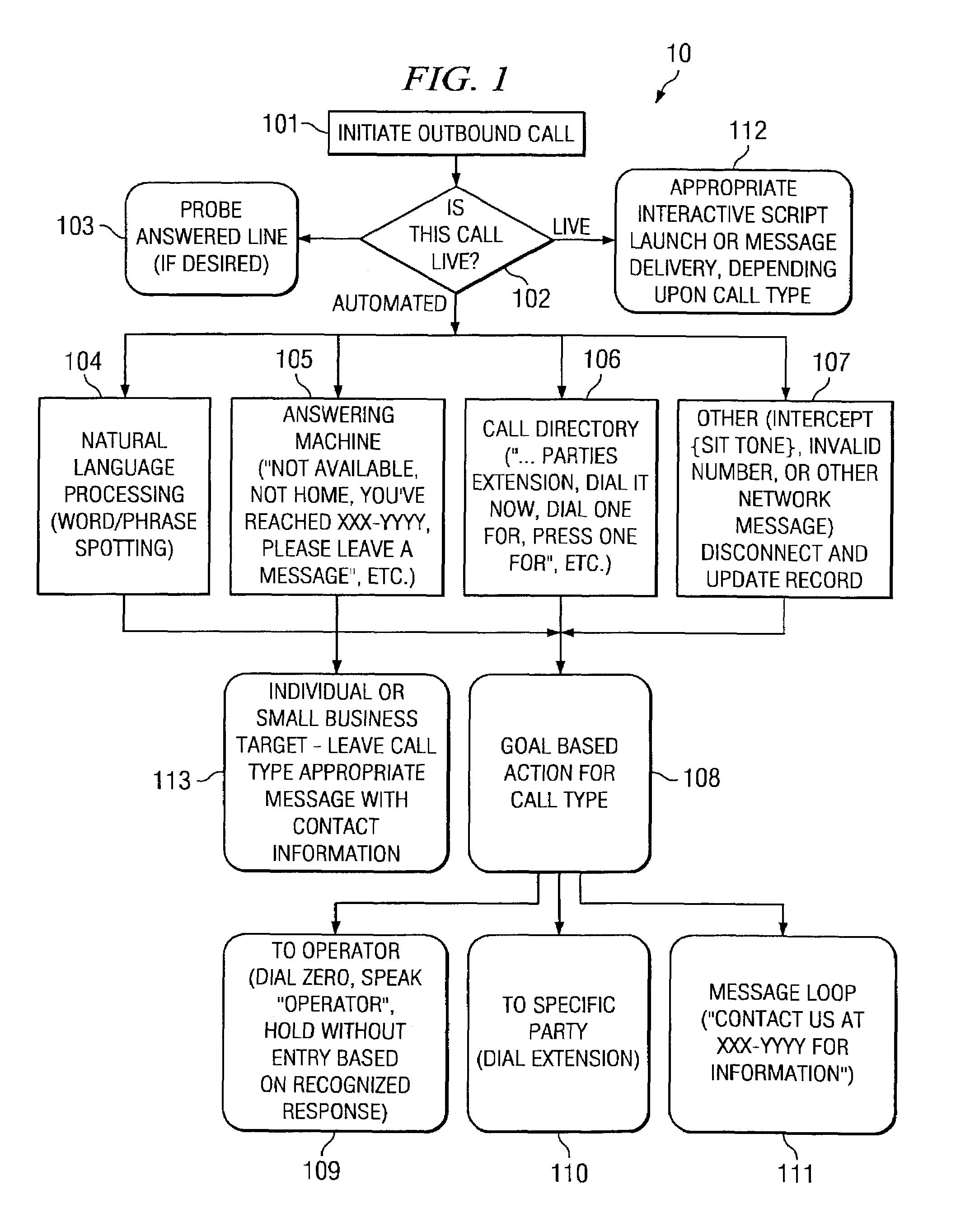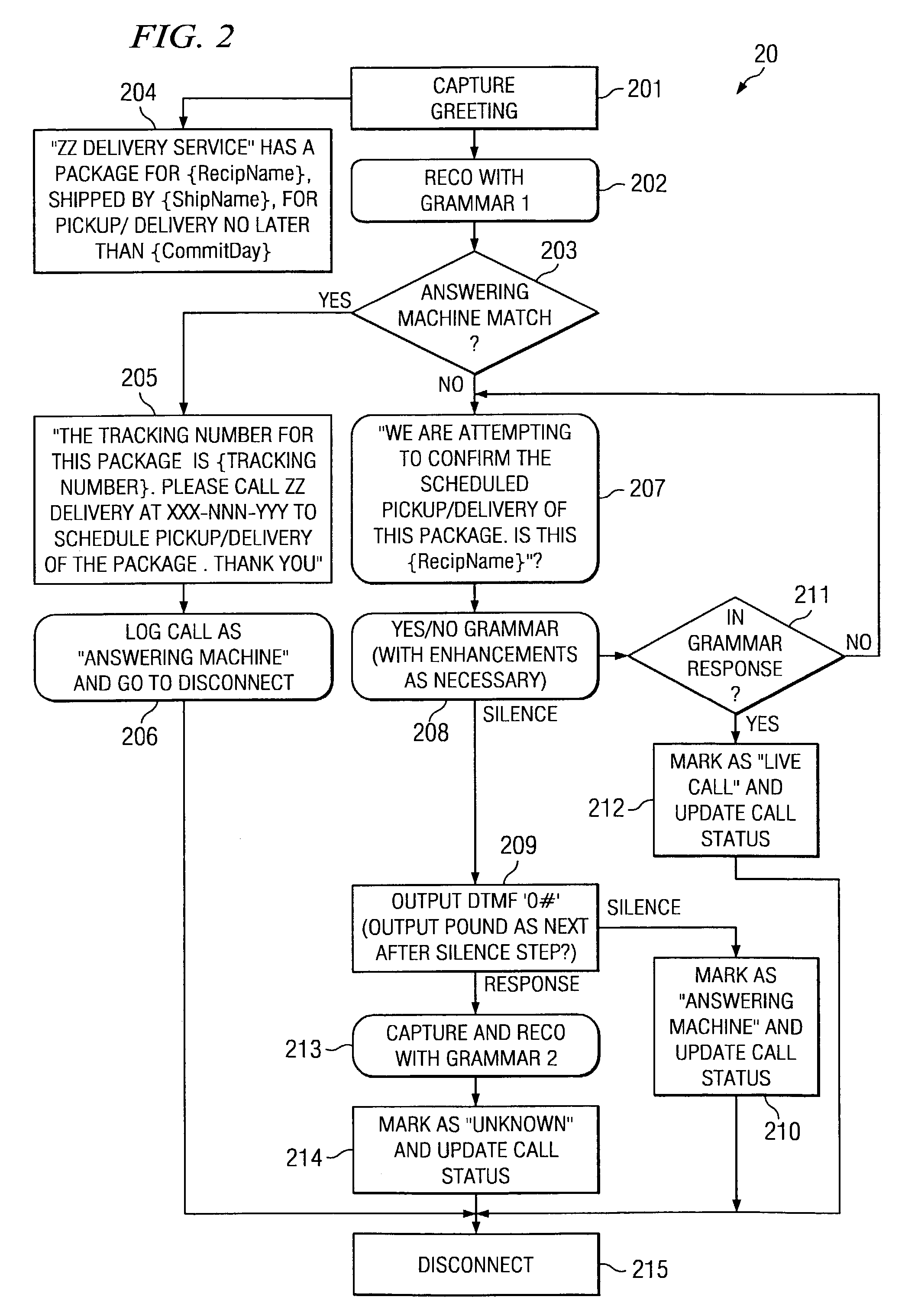System and method for call answer determination for automated calling systems
a call answer and automated calling technology, applied in the field of automatic outbound calling systems, can solve the problems of not knowing if a live person actually received the message, the automated calling system has to become more and more sophisticated, and the system cannot know
- Summary
- Abstract
- Description
- Claims
- Application Information
AI Technical Summary
Benefits of technology
Problems solved by technology
Method used
Image
Examples
Embodiment Construction
[0015]FIG. 1 shows diagram 10 which is one embodiment of a call flow starting with process 101 which is the initiation of an outbound call from an automatic calling system, such as system 40, FIG. 4. Process 102 determines if the line has answered with a determined live (real-time response) person. One system for making such a determination is process 103, which interrupts the answering party in order to probe that party. The probe would be such so as to elicit a response (such as “Yes” or “No”).
[0016]As part of this probe, the calling system could retrieve specific information pertaining to the called party. For example, that information could be the called party's name and perhaps other information, such as an order number, delivery code, etc. When answer is detected, whether it be a live person or a machine, a message (probe) is played. This message could be, “This is XYZ calling, we have a delivery for Ms. Smith. Is this Ms. Smith speaking?”.
[0017]If a live person had answered t...
PUM
 Login to View More
Login to View More Abstract
Description
Claims
Application Information
 Login to View More
Login to View More - R&D
- Intellectual Property
- Life Sciences
- Materials
- Tech Scout
- Unparalleled Data Quality
- Higher Quality Content
- 60% Fewer Hallucinations
Browse by: Latest US Patents, China's latest patents, Technical Efficacy Thesaurus, Application Domain, Technology Topic, Popular Technical Reports.
© 2025 PatSnap. All rights reserved.Legal|Privacy policy|Modern Slavery Act Transparency Statement|Sitemap|About US| Contact US: help@patsnap.com



